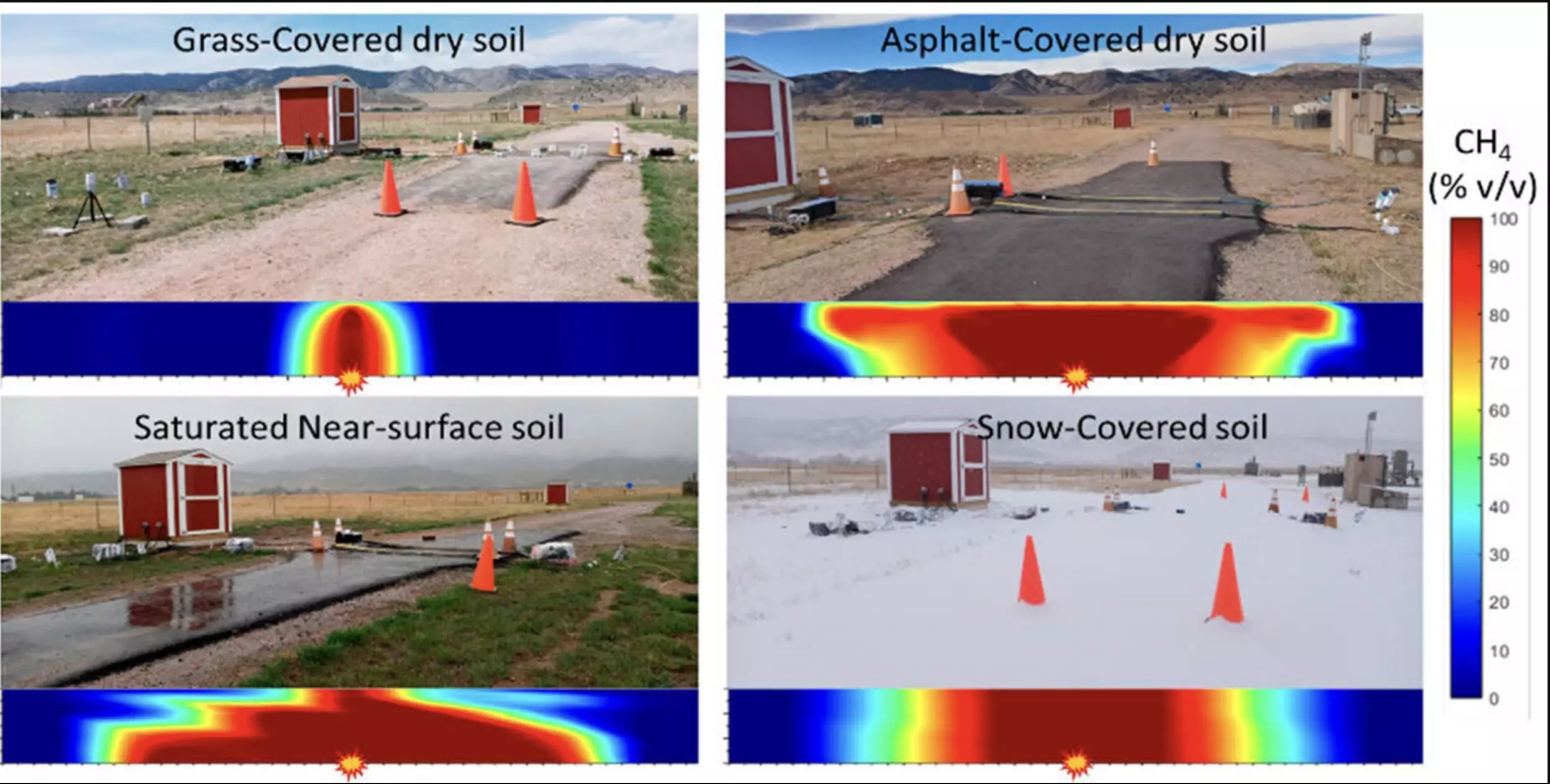Natural gas leaks present a complex interplay of risks that go beyond immediate safety concerns. Recent research conducted by a team from Southern Methodist University (SMU) has provided new insights into the behavior of escaped gases from subsurface pipelines under various surface conditions. The study reveals that conditions like saturation from snow or rain, as well as pavement types such as asphalt, can significantly amplify the reach and speed of migrating natural gas. This understanding comes at a crucial time for industries that depend on infrastructure safety, and it prompts a reevaluation of emerging protocols for monitoring and managing natural gas pipeline integrity.
Surface Conditions: A Catalyst for Gas Migration
The research illustrates a correlation between specific surface conditions and the dynamics of gas migration. Under saturated conditions—whether caused by rain or snow—natural gas leakage can spread up to three to four times farther compared to dry soils. Furthermore, such conditions can expedite the rate at which gas escapes, with speeds up to 3.5 times faster than leaks occurring in arid environments. Not only is this a groundbreaking revelation, but it also highlights the critical need for first responders and pipeline operators to rethink strategies related to emergency response.
Kathleen M. Smits, a prominent figure in the study, emphasizes the significance of these findings. By linking surface conditions directly to belowground gas transport metrics, the research highlights a critical gap in traditional pipeline safety assessments. This foresight could guide improvements in both safety measures and environmental outcomes that stem from managing natural gas leaks.
Environmental Implications: Beyond Explosion Risks
Undoubtedly, the most recognizable danger from leaking natural gas is the risk of explosion. Yet, the environmental ramifications cannot be overstated. Methane, the principal component of natural gas, is a potent greenhouse gas that significantly contributes to global warming, trailing only carbon dioxide. The consequences of these leaks extend into climate science, making it essential for energy companies to prioritize mitigation strategies rooted not only in safety but also in environmental stewardship.
Efforts to locate and securely remove methane from the environment could play a vital role in curtailing global warming. As Smits articulates, understanding the distance and transport dynamics of gases leaking from the pipeline allows for targeted interventions. This research acts as a springboard to enhance existing methodologies for identifying pipeline leaks, fundamentally shifting the operational focus from strictly emergency response to proactive risk management.
The Research Methodology: Innovative Leak Experiments
The research team engaged in meticulous controlled experiments at Colorado State University’s Methane Emissions Technology Evaluation Center (METEC). They simulated gas leaks under various surface conditions—ranging from saturated grass to dry asphalt—to gauge how these environments influenced gas behavior. The experiments involved releasing natural gas continuously for up to 24 hours, mimicking realistic leak scenarios.
The significance of this method lies in its precision and its potential to reveal critical behavioral patterns of natural gas under various conditions. For instance, the research showed that when gas crossed surfaces like asphalt or wet soil, it often ended up trapped underneath these barriers, with the ability to migrate laterally, posing extended risks. Navodi Jayarathne, the lead researcher of the study, likened the scenario to gas navigating through a “Swiss cheese” structure, where underground pathways are filled with gaps and partitioning material that complicate conventional risk assumptions.
Long-Term Effects: Methane Persistence Post-Leak
Perhaps one of the most surprising discoveries of the study is methane’s persistence in the environment even after a leak has been halted. The researchers found that methane remained trapped beneath the surface for up to 12 days at high concentrations. This aspect underscores the fact that pipeline operators and emergency responders must maintain vigilance long after a leak is remedied. The unique interplay between surface conditions and gas behavior continues to evolve even post-leak, reiterating the need for comprehensive monitoring strategies.
The research conducted by the SMU-led team provides indispensable insights that can influence both safety protocols and environmental practices across the natural gas industry. By revealing the multifaceted nature of gas migration, the findings call for a significant shift in how stakeholders approach pipeline leak risks, mirroring the complexities of an ever-changing environment. The implications resonate far beyond the laboratory, urging an industry-wide optimization of strategies designed to protect both lives and the planet.

